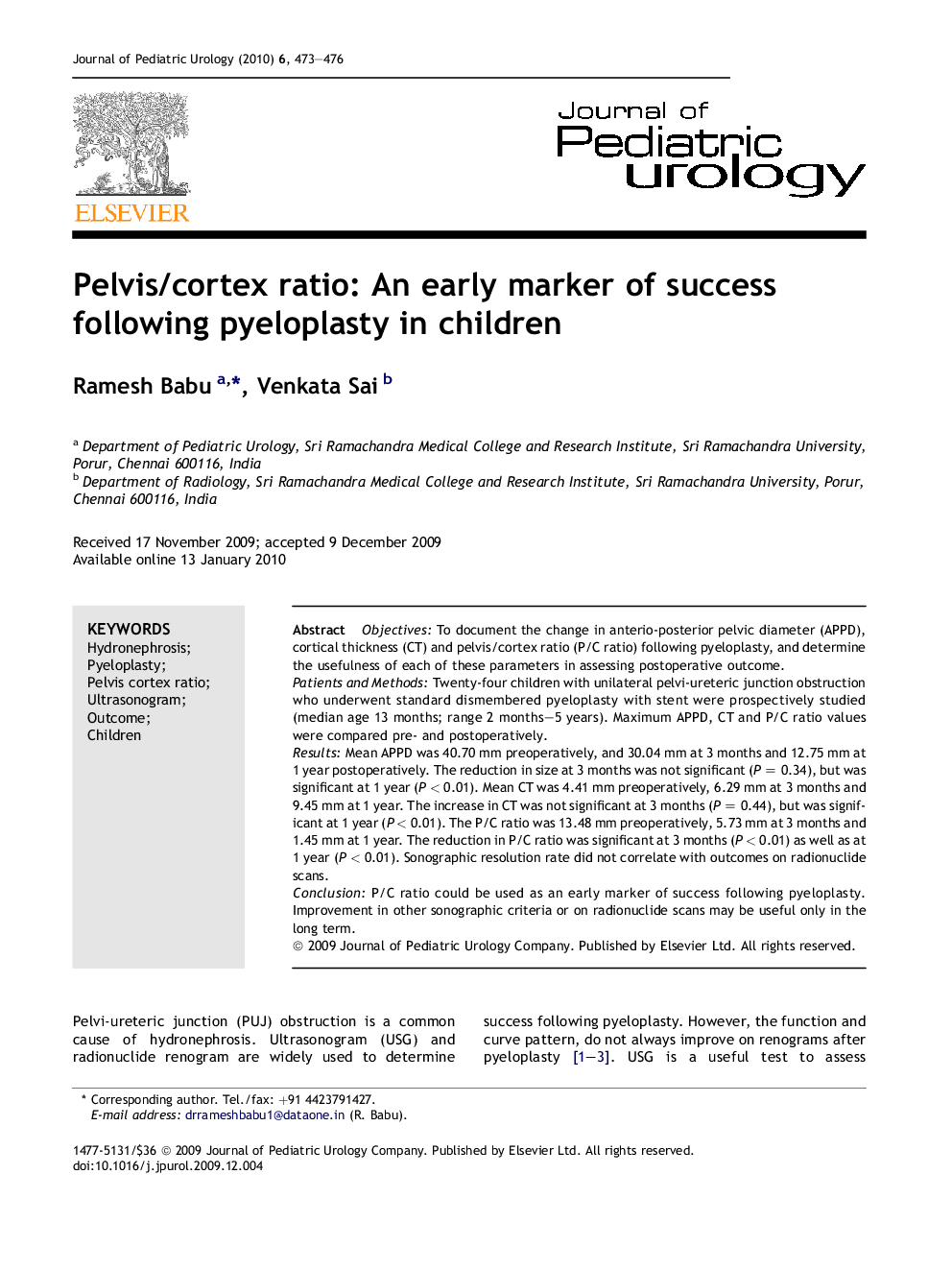| Article ID | Journal | Published Year | Pages | File Type |
|---|---|---|---|---|
| 4163162 | Journal of Pediatric Urology | 2010 | 4 Pages |
ObjectivesTo document the change in anterio-posterior pelvic diameter (APPD), cortical thickness (CT) and pelvis/cortex ratio (P/C ratio) following pyeloplasty, and determine the usefulness of each of these parameters in assessing postoperative outcome.Patients and MethodsTwenty-four children with unilateral pelvi-ureteric junction obstruction who underwent standard dismembered pyeloplasty with stent were prospectively studied (median age 13 months; range 2 months–5 years). Maximum APPD, CT and P/C ratio values were compared pre- and postoperatively.ResultsMean APPD was 40.70 mm preoperatively, and 30.04 mm at 3 months and 12.75 mm at 1 year postoperatively. The reduction in size at 3 months was not significant (P = 0.34), but was significant at 1 year (P < 0.01). Mean CT was 4.41 mm preoperatively, 6.29 mm at 3 months and 9.45 mm at 1 year. The increase in CT was not significant at 3 months (P = 0.44), but was significant at 1 year (P < 0.01). The P/C ratio was 13.48 mm preoperatively, 5.73 mm at 3 months and 1.45 mm at 1 year. The reduction in P/C ratio was significant at 3 months (P < 0.01) as well as at 1 year (P < 0.01). Sonographic resolution rate did not correlate with outcomes on radionuclide scans.ConclusionP/C ratio could be used as an early marker of success following pyeloplasty. Improvement in other sonographic criteria or on radionuclide scans may be useful only in the long term.
